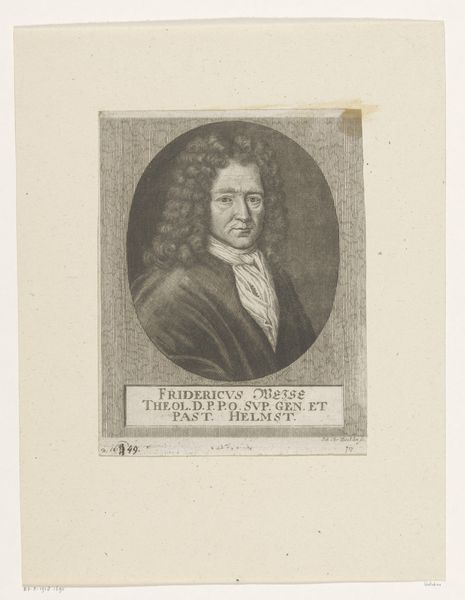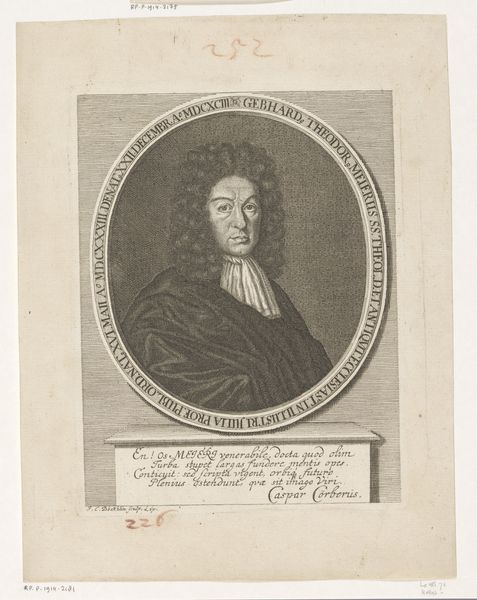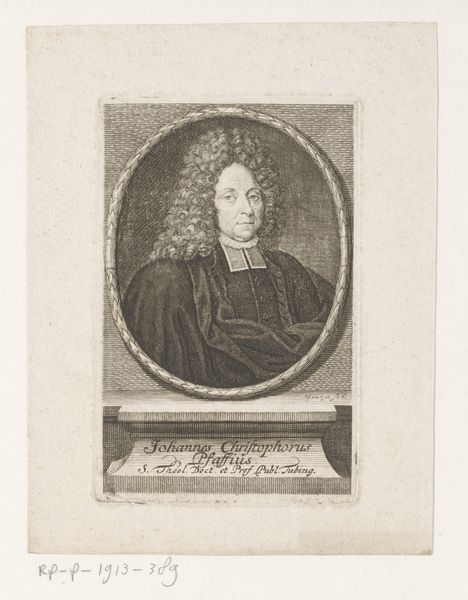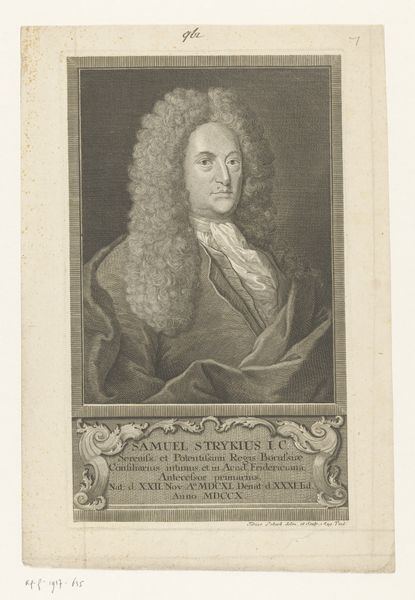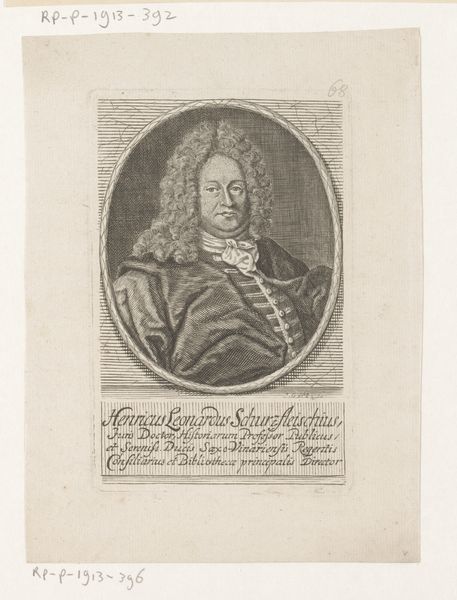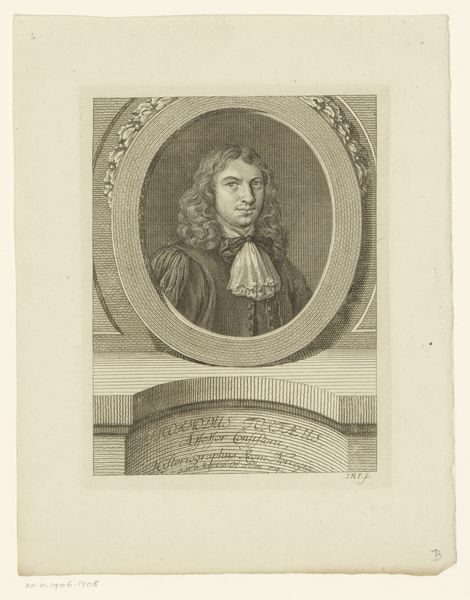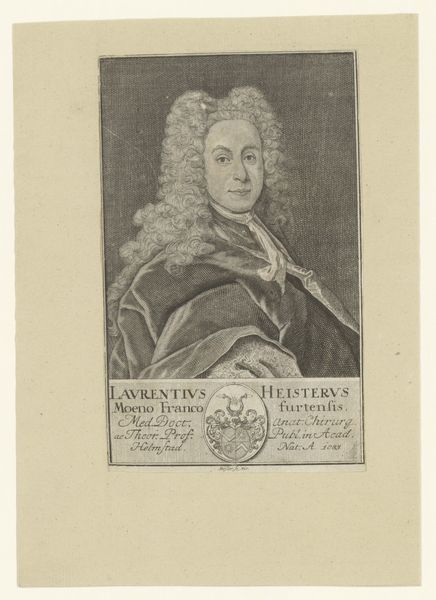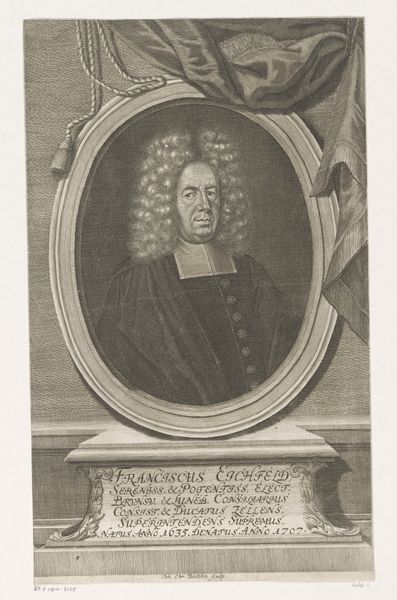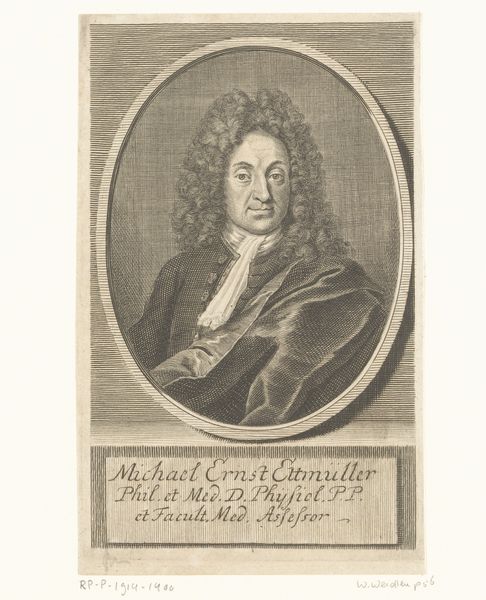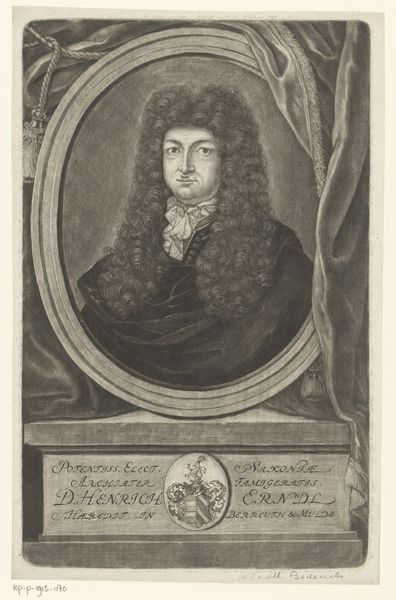
print, paper, engraving
#
portrait
#
aged paper
#
toned paper
#
self-portrait
#
baroque
# print
#
old engraving style
#
paper
#
line
#
engraving
Dimensions: height 206 mm, width 156 mm
Copyright: Rijks Museum: Open Domain
Heinrich Jakob Otto made this portrait of Joachim Hoppe using etching. The laurel wreath surrounding Hoppe immediately catches the eye, an emblem deeply rooted in history. In ancient Greece, laurel wreaths crowned victors and symbolized triumph, honor, and immortality. Echoes of this symbolism reverberate through time. Consider how Roman emperors adopted laurel wreaths to denote divine status and military victory. This motif also appears in Renaissance art, where it represents academic achievement and poetic inspiration. Even today, we see modified versions of the laurel wreath in logos and emblems, often signifying excellence or victory. Its repeated usage across millennia speaks to our innate desire to honor achievement and celebrate success. This desire is not merely rational, but also deeply psychological. The wreath is a powerful force, engaging viewers on a subconscious level, evoking emotions and memories tied to cultural values of aspiration and triumph. The cyclical progression of the laurel wreath demonstrates how symbols resurface, evolve, and take on new meanings in different historical contexts.
Comments
No comments
Be the first to comment and join the conversation on the ultimate creative platform.
